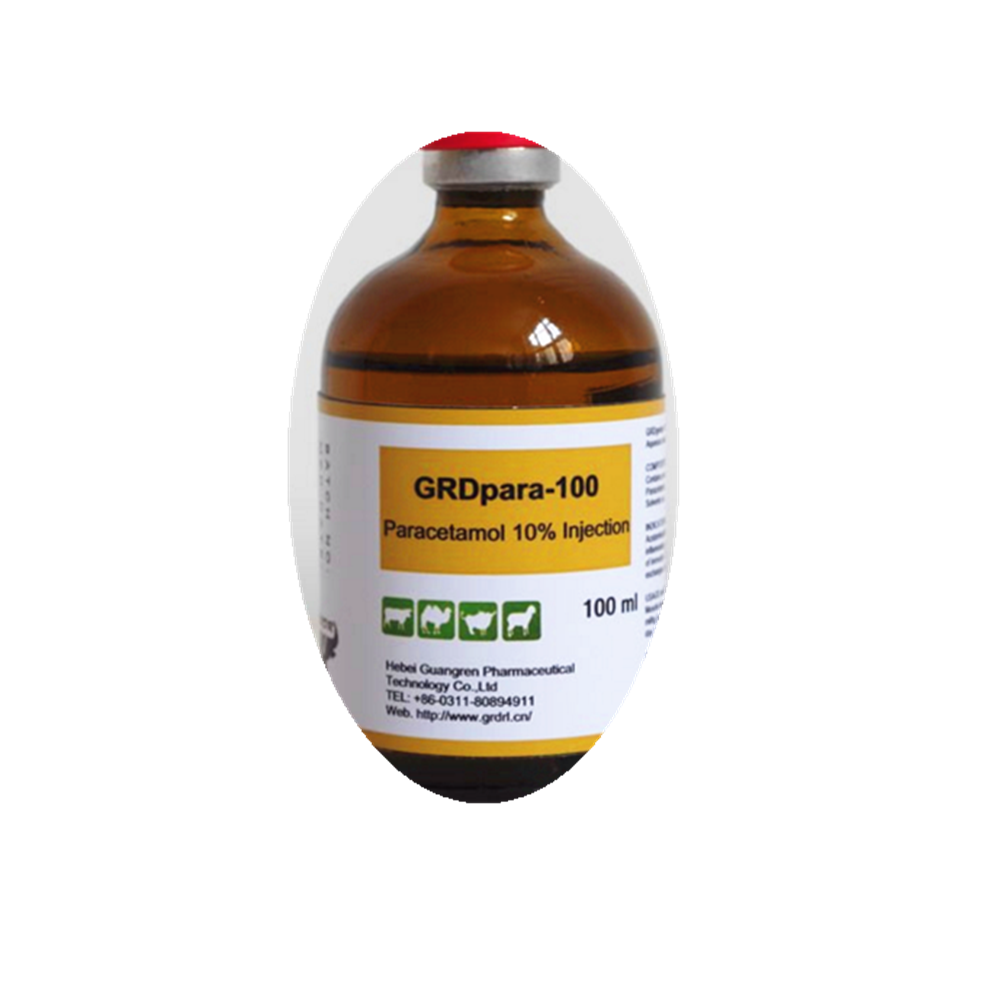Main Ingredient: Paracetamol. This product is a clear, colorless or almost colorless, slightly viscous liquid. Pharmacodynamics Paracetamol has antipyretic, analgesic and anti-inflammatory effects. The antipyretic effect is similar to aspirin, but the analgesic and anti-inflammatory effects are weaker. Its inhibitory effect on the synthesis and release of Prostaglandin from Thalamus was stronger than that of peripheral prostaglandin. It has no effect on platelet and coagulation mechanism. Mainly as a small and medium animal antipyretic analgesic, used for fever, muscle pain, joint pain and rheumatism. PHARMACOKINETICS, oral absorption fast, 30 minutes after the blood drug peak concentration. It’s metabolized primarily in the liver, and most of it passes through the kidneys when combined with Glucuronic acid or sulfuric acid. In the liver, some drugs are deacetylated to form P-AMINOPHENOL, which is oxidized to iminoquinone. IMINOQUINONE can oxidize hemoglobin and make it lose the ability of carrying oxygen. It can cause adverse reactions such as Hypoxia, cyanosis, red blood cell lysis, jaundice and liver damage. Used for relieving fever and relieving pain of domestic animals, mainly treating fever, muscle pain and rheumatism of animals. Intramuscular injection of 5-10g sheep, 5-10g cattle, 0.5-2g pig, 0.5-1g dog and 0.1-0.5 G cyanosis, red Blood Cell Lysis, jaundice and liver damage, etc. (1) cat banned, because after the drug can cause serious toxic reactions. High Doses can cause liver and kidney damage, and L-cysteine or methionine can prevent liver damage within 12 hours after administration. Caution in the use of live and young animals with liver and kidney dysfunction.






